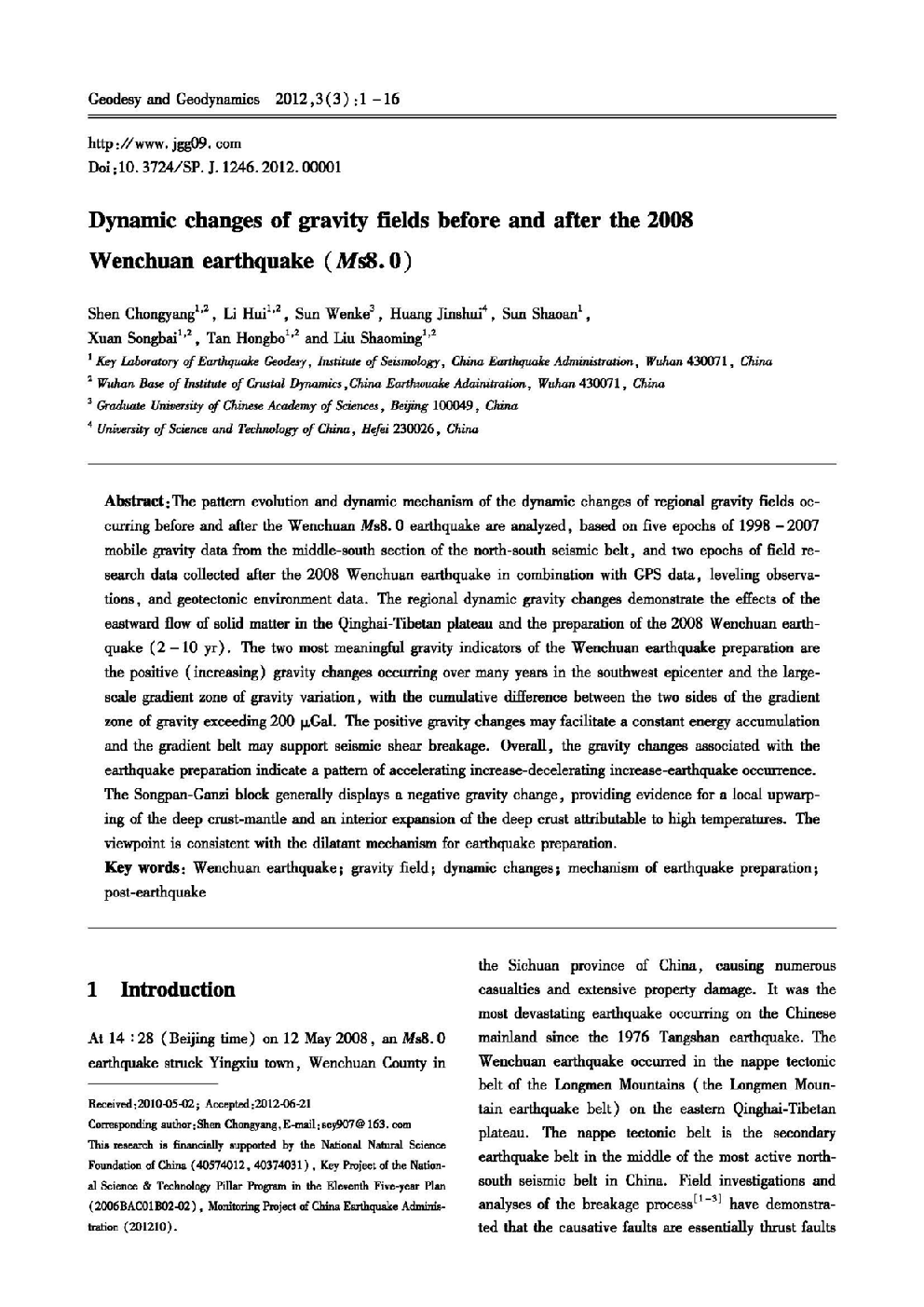| Article ID | Journal | Published Year | Pages | File Type |
|---|---|---|---|---|
| 4683738 | Geodesy and Geodynamics | 2012 | 16 Pages |
:The pattern evolution and dynamic mechanism of the dynamic changes of regional gravity fields occurring before and after the Wenchuan Ms8.0 earthquake are analyzed, based on five epochs of 1998–2007 mobile gravity data from the middle-south section of the north–south seismic belt, and two epochs of field research data collected after the 2008 Wenchuan earthquake in combination with GPS data, leveling observations, and geotectonic environment data. The regional dynamic gravity changes demonstrate the effects of the eastward flow of solid matter in the Qinghai-Tibetan plateau and the preparation of the 2008 Wenchuan earthquake (2–10 yr). The two most meaningful gravity indicators of the Wenchuan earthquake preparation are the positive (increasing) gravity changes occurring over many years in the southwest epicenter and the large-scale gradient zone of gravity variation, with the cumulative difference between the two sides of the gradient zone of gravity exceeding 200 μGal. The positive gravity changes may facilitate a constant energy accumulation and the gradient belt may support seismic shear breakage. Overall, the gravity changes associated with the earthquake preparation indicate a pattern of accelerating increase-decelerating increase-earthquake occurrence. The Songpan-Ganzi block generally displays a negative gravity change, providing evidence for a local upwarping of the deep crust-mantle and an interior expansion of the deep crust attributable to high temperatures. The viewpoint is consistent with the dilatant mechanism for earthquake preparation.
